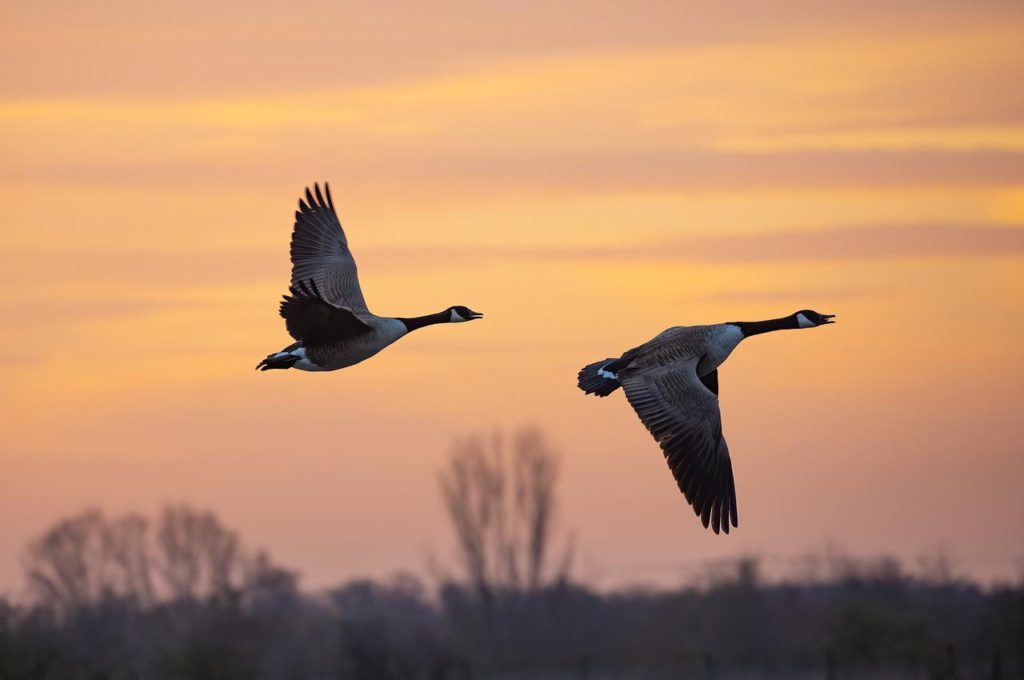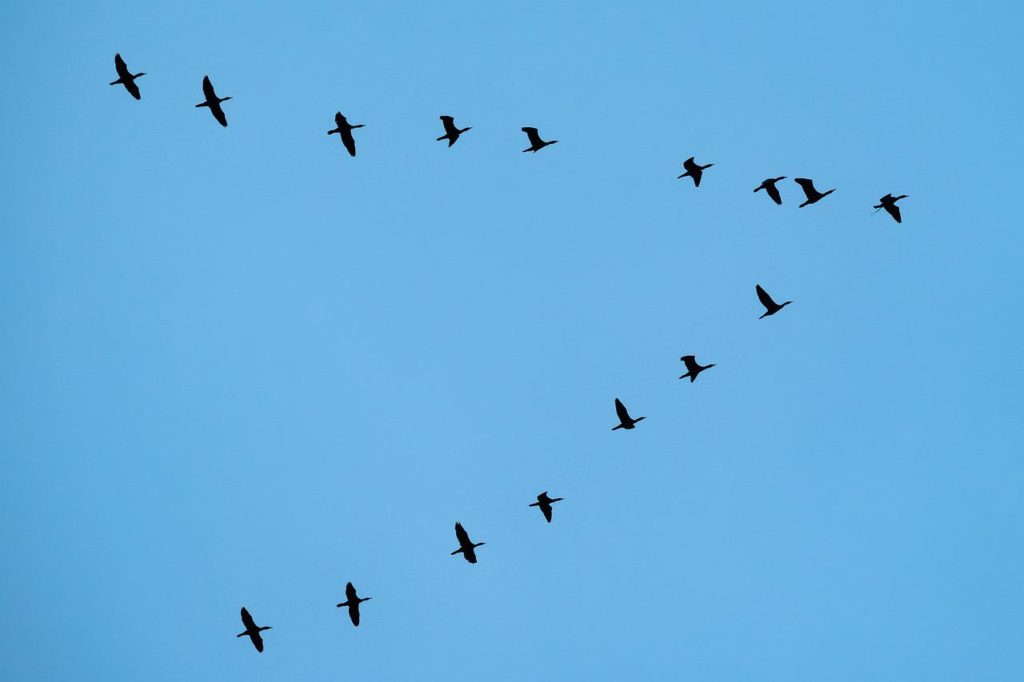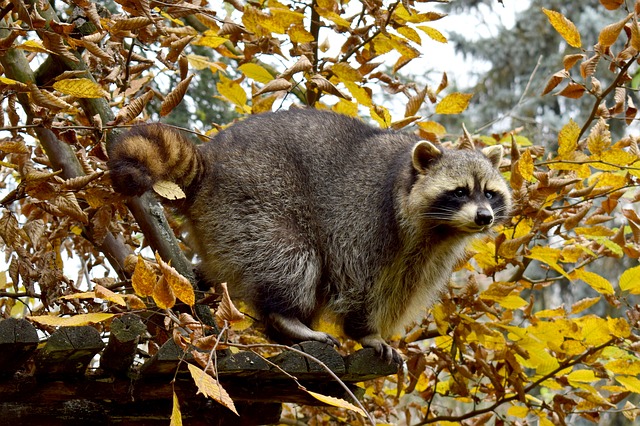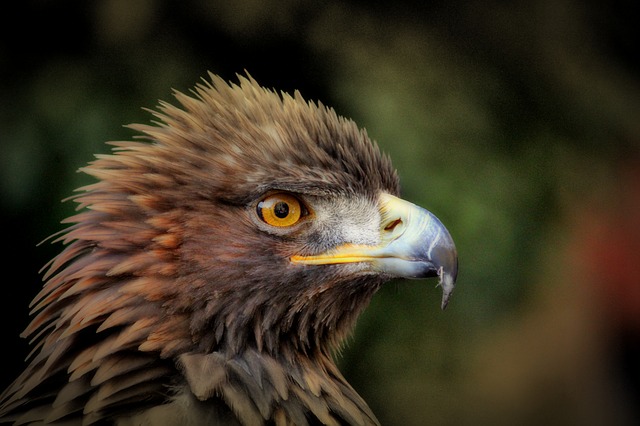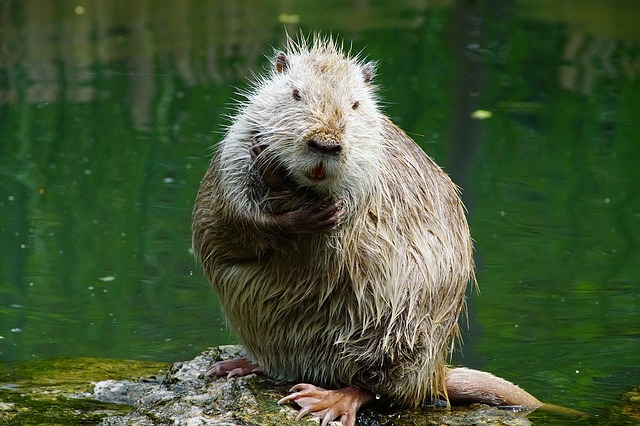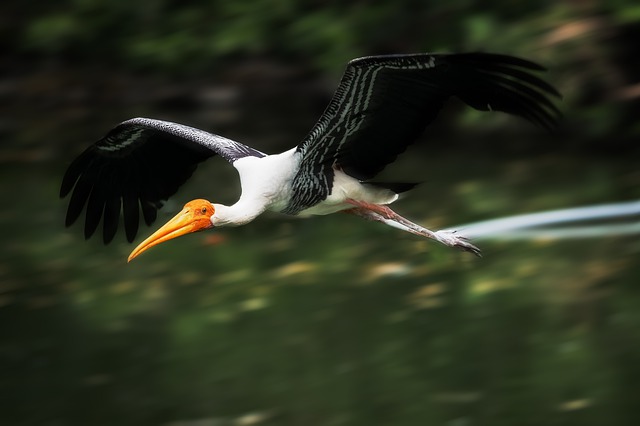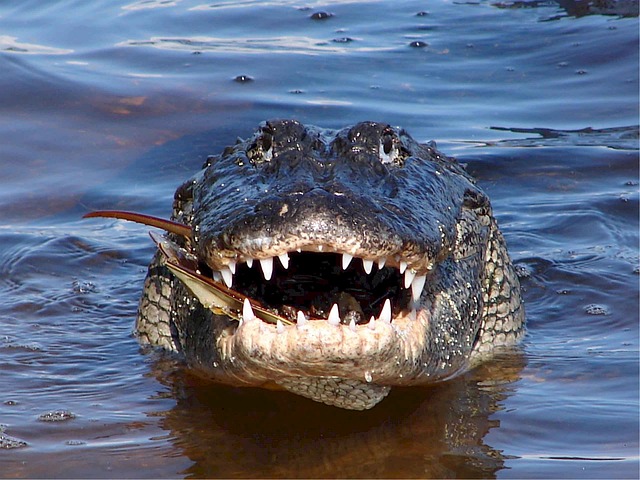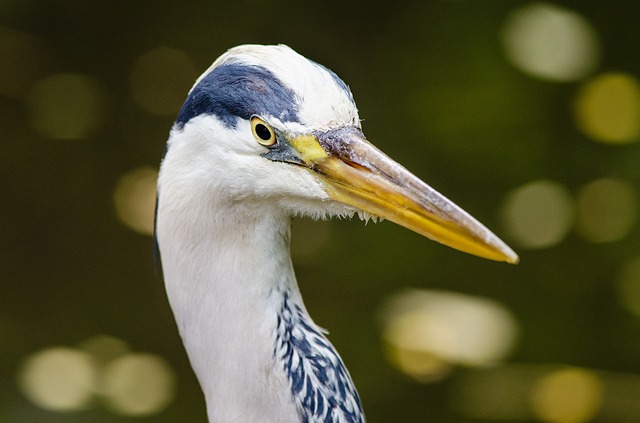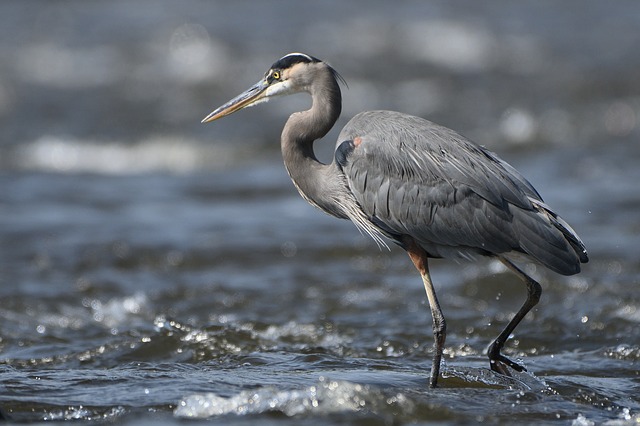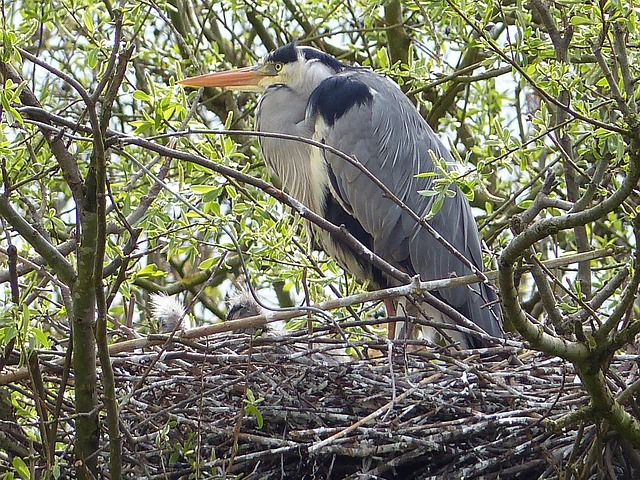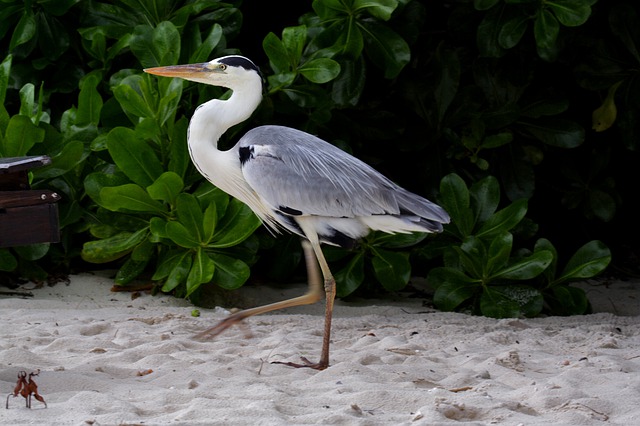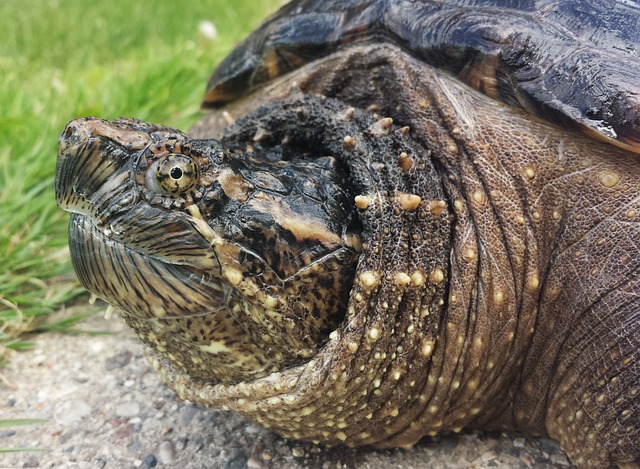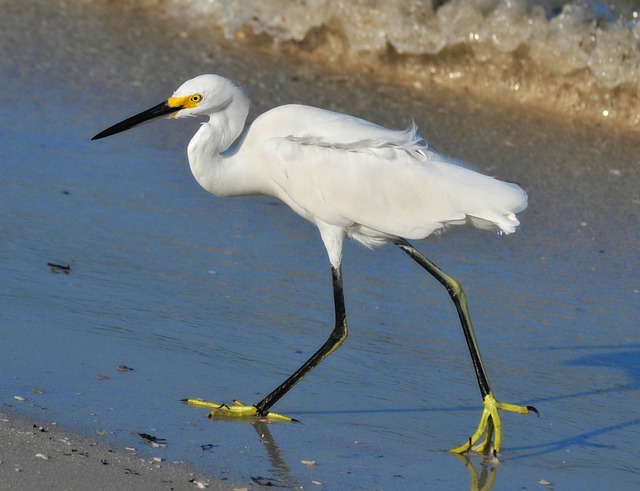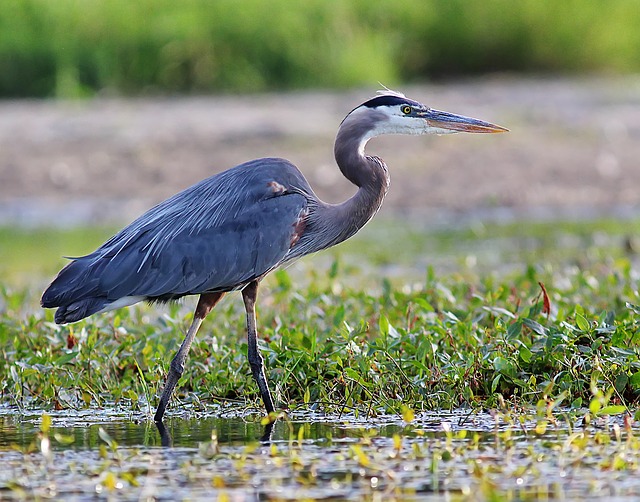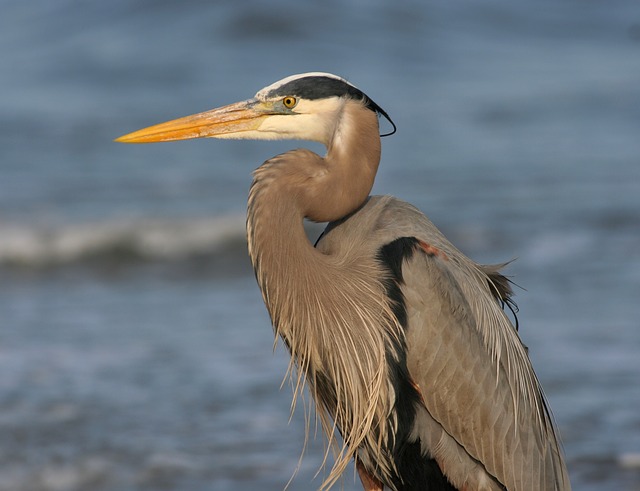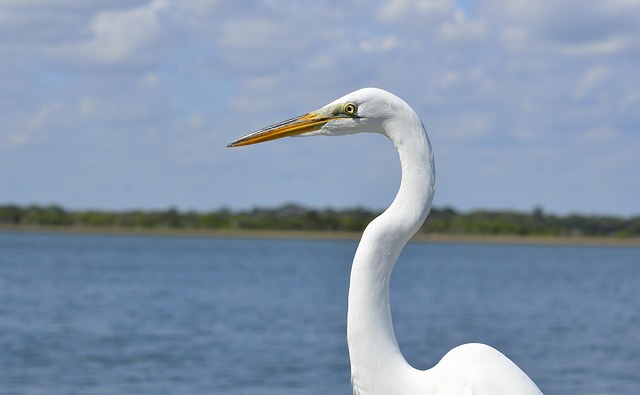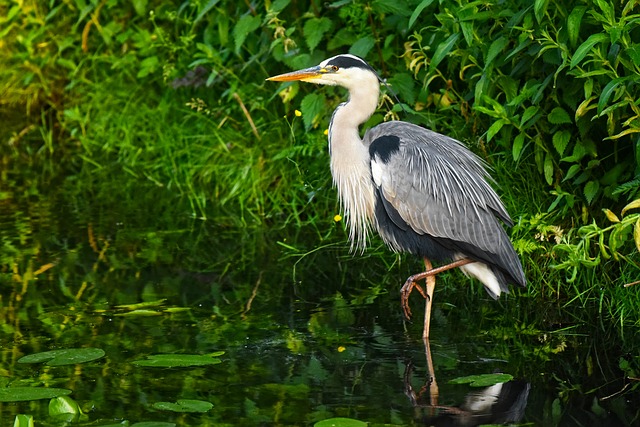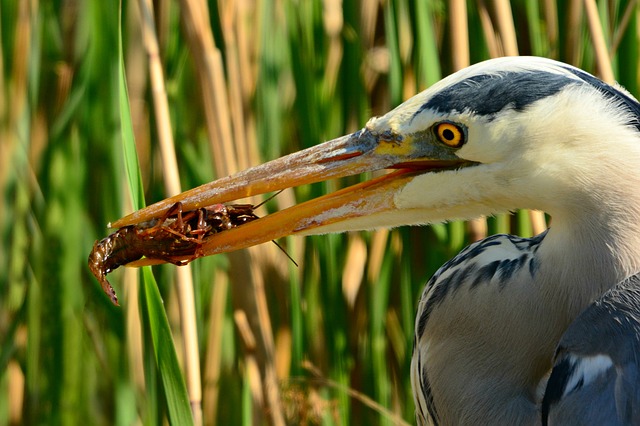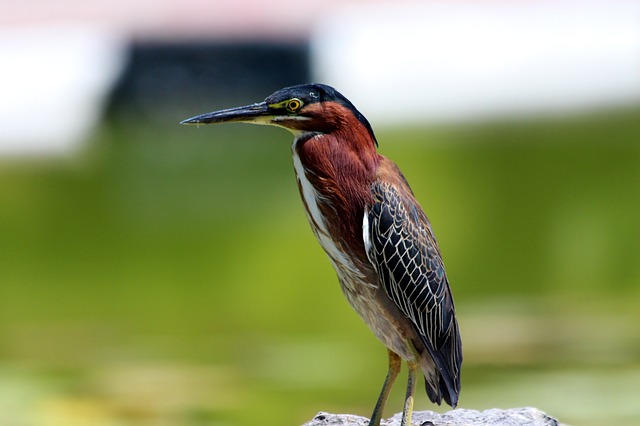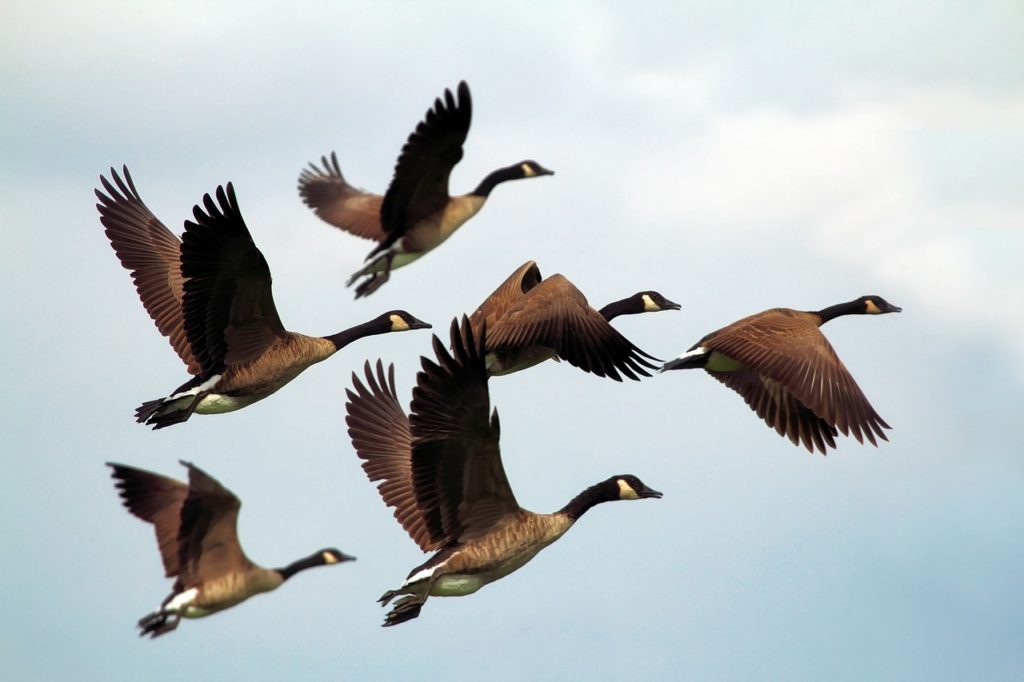
Although geese are clearly birds, there are many individuals who do not necessarily associate them with flying. So, do geese fly? The honest answer is that these waterfowl do. They do not exactly slouch in the flying department, either. Many people are pleasantly surprised to learn that geese are actually remarkably speedy flying birds. There are many things about their flying practices that are quite distinctive and noteworthy, too.
Why Do Geese Fly South?
Many bird species migrate, and geese are certainly no exception to this. There are some geese that fly north for migration purposes. There are others that do the total opposite of that. Geese that reside in northern locations tend to travel particularly far south. These geese skip over their counterparts from more southern parts.
People speculate that the northern birds do this out of the desire to steer clear of battling it out against southern geese for sustenance acquisition. They don’t want to have to deal with southern geese that have long-established strong wintering environments.
Do Geese Fly at Night?
It isn’t unusual at all to spot geese flying during the daytime. They fly during the night in times of migration as well. Migration flying can be quite taxing and stressful on geese. That’s why the birds sometimes fly at night. Night flights enable them to reduce the amount of energy they exert. The evening air is a lot less “hectic,” after all.
Why Do Geese Fly in Formation?
It’s no surprise that flying is an activity that’s tiring. Wing flapping can be fatiguing. Significant levels of flapping contribute to air current updrafts that surround the tips of birds’ wings. If a different goose flies in this zone, he or she can save precious energy.
Minimizing energy consumption gives geese the power to travel much longer. Flying in a V formation is all about practicality. Note, too, that formation flying can boost range considerably. “Independent” flying simply can’t hold a candle to it.
Why Do Geese Honk When They Fly?
Geese that fly in flocks tend to be noisy. They tend to honk a lot. The goal behind this is to motivate the geese that are right in front of them to maintain their speed levels. The honking also is an attempt to stop the flock from separating.
How Fast Do Geese Fly?
Geese are substantial and weighty birds. They have the ability to fly rapidly as well. They can surpass 30 miles per hour with the assistance of their strong wing beats. Geese don’t fly as vultures or eagles do. Vultures and eagles soar. Geese can in many cases fly 1,500 miles throughout the course of a single day.
How High Do Geese Fly?
Geese fly at altitudes that exceed 15,000 feet on a routine basis. There are even species that have been spotted flying as high as 23,000 feet. Geese that travel over the Himalayas in Asia tend to fly especially high in the air.
Why Do Geese Fly So High?
Some people scratch their heads asking themselves why geese often fly so high. High altitudes enable geese to stay far away from predators that may endanger them.
Beyond that, high flying gives geese the chance to take full advantage of meteorological “bonuses” such as mountain updrafts and jet streams. This type of flying can even minimize drag and therefore minimize energy levels that are essential for flight purposes.
How Long Do Geese Fly Without Stopping?
Geese are birds that have a lot of endurance. The creatures can fly from 100 to 200 miles in total without pausing at all. That’s precisely how they can remain in flight mode for numerous hours at a time. Once they pinpoint enticing locales, they rest, consume food, and then continue with their flying journeys.
What Month Do Geese Fly North?
Geese tend to travel to northerly locations during the spring season in the Northern Hemisphere. They do so for migration purposes in April and May. They sometimes even do so at the beginning of June. If you happen to gaze at the blue sky at the end of May or so, you may observe geese flying in their unmistakable and rather conspicuous V formations.
Start Shopping for Birding Supplies!
Raccoon Pictures
Raccoons are easily recognizable by their black face mask and ringed tail. And there are many fascinating things about this intelligent nocturnal species. So we’ve compiled some of the best raccoon pictures to show you just how amazing and unique they are. Raccoon...
Eagle Pictures
Eagles are large powerful raptors with sharp talons and beaks. These apex predators are typically at top of the food chain and there are many interesting things about them. So we’ve compiled some of the best eagle pictures to show you just how amazing they are. Bald...
Nutria Pictures
Nutria are large semi-aquatic rodents from South America. In the United States where they were originally imported for the fur industry, they are an invasive species. Despite their pest status, there are many interesting things about them. So here are some of the best...
Stork Pictures
Storks are tall wading birds with long legs and necks. These amazing birds have many fascinating things about them. And we’ve compiled some of the top stork pictures to help show you just how interesting and beautiful they are. White Stork The white stork has a body...
Alligator Pictures
The American alligator is a large predatory reptile that inhabits the southeastern United States. It’s a fascinating animal with many interesting things about it. And we’ve collected some of the best alligator pictures to help show you just how amazing they are....
How Long Do Great Blue Herons Live?
The life expectancy of birds is known to be closely related to their size. So as the biggest heron species in North America, how long do great blue herons live? The average life expectancy for these large birds is around fifteen years. However, surviving their first...
Where Do Great Blue Herons Live?
The great blue heron is considered to be the most widespread heron in North America. So exactly where do great blue herons live? Here’s what you’ll want to know. Great Blue Heron Range The great blue heron is found throughout most of the North American continent. In...
Where Do Great Blue Herons Nest?
While many of us have seen great blue herons their nesting habits often remain a mystery to most people. That’s because they purposely nest in hard-to-reach places. So where do great blue herons nest? Here’s the answer. A Colony Nester Typically great blue herons nest...
Do Great Blue Herons Migrate?
Do great blue herons migrate? This is something many people wonder about, especially if they’ve seen a heron during the cold winter months. And the answer is both yes and no. Here’s what you’ll want to know. Great Blue Heron Range The great blue heron has a large...
Great Blue Heron Pictures
Few species of birds are as tall, elegant, and attractive as the great blue heron. So we’ve compiled some of the best great blue heron pictures for you to admire and help you to learn more about this amazing bird! Great Blue Heron Head The head of the great blue heron...
What Do Snapping Turtles Eat?
Many people are familiar with the fact that snapping turtles have an incredibly strong bite. They use their strong jaws and sharp beak not just for defense but also for catching food. So what do snapping turtles eat? Here's what you'll want to know. Snapping turtles...
Birds That Look Like Egrets
Egrets are predatory birds that hunt and live in a range of both freshwater and saltwater habitats. These birds are usually white, and have S-shaped necks, long legs, and dagger-like beaks. However, they are often mistaken for several other types of birds that look...
Birds That Look Like Storks
Storks are large wading birds with robust bills and long legs. These tall carnivorous birds are well-known for their wide wingspans and also for building huge nests. However, they are often confused with several other bird types that have a similar appearance. So...
Birds That Look Like Herons
Herons are tall birds with long slender legs and necks. And they often wade in the water when hunting for food. Yet there are several other types of birds that may be mistaken for them. To make things more confusing many of these birds also spend time in the water and...
Great Blue Heron Facts
The great blue heron is named for its size and the grey-blue color on its wings, stomach, and back. This species has many fascinating things about it. So here are the top great blue heron facts. It's The Largest North American Heron The great blue heron is a big bird...
Are There White Herons?
Are there white herons? This is something many people wonder especially after seeing a tall all-white bird. The answer is yes! And here’s a fast introduction to them. A White Color Morph Most people are familiar with the great blue heron, a large predatory and...
Great White Heron Facts
While many people are familiar with the great blue heron, they are often surprised to find out that there’s also a great white heron. There are many things you’ll want to know about this stunning bird. So here are the top great white heron facts. The Great White Heron...
What Animals Eat Herons?
Because of their size and long sharp beaks, it can be hard to imagine that herons have any natural predators. While they do, they definitely don’t have nearly as many predators as most other types of birds. So what animals eat herons? Predators Of Adult Herons For...
What Do Herons Eat?
Great blue herons are often seen slowly wading in shallow water hunting for food. You may have even spotted one of these large birds in your own backyard pond. This leaves many people wondering: “What do great blue herons eat?” And here’s everything you’ll need to...
What Do Green Herons Eat?
The green heron is a secretive and small heron species. What it lacks in size however it makes up for in intelligence. It is particularly well-known for how it uses its smarts when hunting for food. So what do green herons eat? Read on to find out. Meet The Green...
